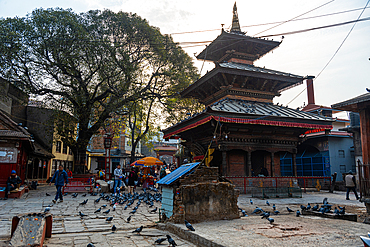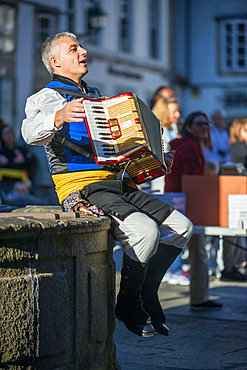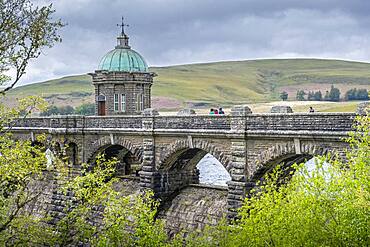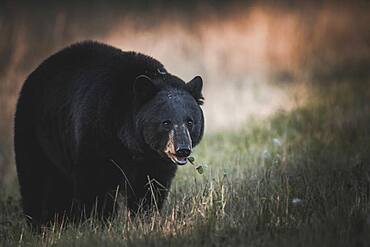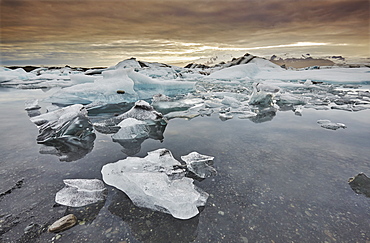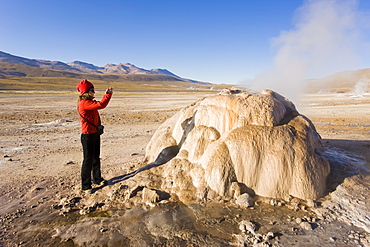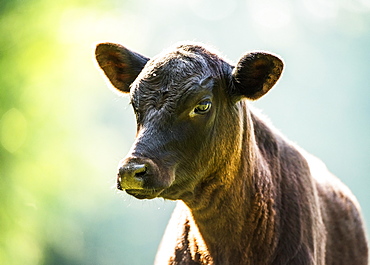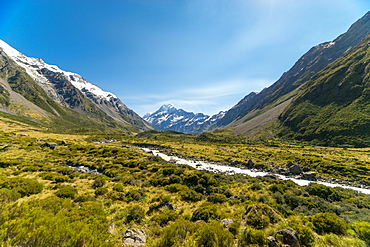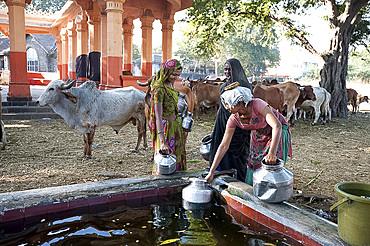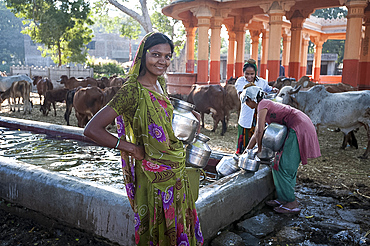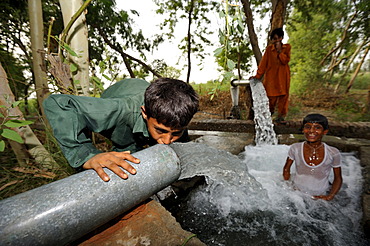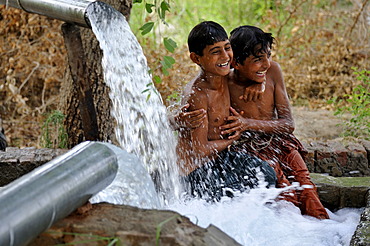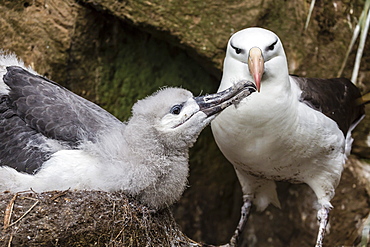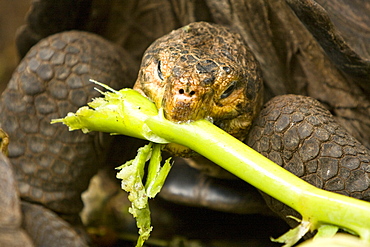Recent searches
Loading...
1372-243 - Early morning at hinduist Indrayani Temple temple with pigeons being fed by devotees.
1350-6675 - Traditional music of Galicia. Gaiteiros Rio de anxo. Old Town, Santiago de Compostela, UNESCO World Heritage Site, Galicia, Spain.
Bagpipes are a woodwind instrument using enclosed reeds fed from a constant reservoir of air in the form of a bag. The Scottish Great Highland bagpipes are the best known examples in the Anglophone world, but people have played bagpipes for centuries throughout large parts of Europe. The term bagpipe is equally correct in the singular or the plural, though pipers usually refer to the bagpipes as the pipes, a set of pipes or a stand of pipes.
1350-6674 - Traditional music of Galicia. Gaiteiros Rio de anxo. Old Town, Santiago de Compostela, UNESCO World Heritage Site, Galicia, Spain.
Bagpipes are a woodwind instrument using enclosed reeds fed from a constant reservoir of air in the form of a bag. The Scottish Great Highland bagpipes are the best known examples in the Anglophone world, but people have played bagpipes for centuries throughout large parts of Europe. The term bagpipe is equally correct in the singular or the plural, though pipers usually refer to the bagpipes as the pipes, a set of pipes or a stand of pipes.
1350-6673 - Traditional music of Galicia. Gaiteiros Rio de anxo. Old Town, Santiago de Compostela, UNESCO World Heritage Site, Galicia, Spain.
Bagpipes are a woodwind instrument using enclosed reeds fed from a constant reservoir of air in the form of a bag. The Scottish Great Highland bagpipes are the best known examples in the Anglophone world, but people have played bagpipes for centuries throughout large parts of Europe. The term bagpipe is equally correct in the singular or the plural, though pipers usually refer to the bagpipes as the pipes, a set of pipes or a stand of pipes.
832-397798 - French Bulldog dog being fed slices of fresh raw watermelon fruit
1350-3593 - Two whalesharks bump each other while feeding on baitfish being fed to them by local fishermen, Rhincodon typus, Cendrawasih Bay, Papua Province, Indonesia, Pacific Ocean
832-393003 - Juvenile Emperor penguin (Aptenodytes forsteri) being fed, Riiser-Larsen Ice Shelf, Queen Maud Land Coast, Weddell Sea, Antarctica
1350-1730 - Craig Goch reservoir at Elan Valley, Powys, Wales
1350-1731 - Craig Goch reservoir at Elan Valley, Powys, Wales
1350-1929 - A well fed black bear (Ursus americanus) eats some green before the winter comes, Yukon Territory, Canada.
1116-50479 - Teen with Spastic Dystonic Cerebral Palsy and assistant at school
1116-50481 - Teen with Spastic Dystonic Cerebral Palsy and assistant at school
1116-50486 - Teen with Spastic Dystonic Cerebral Palsy and assistant at school
1116-50478 - Teen with Spastic Dystonic Cerebral Palsy and assistant at school
1202-421 - An iconic Icelandic landscape, an ice-filled lagoon fed by the Vatnajokull icecap, at Jokulsarlon, on the south coast of Iceland, Polar Regions
1202-422 - An iconic Icelandic landscape, an ice-filled lagoon fed by the Vatnajokull icecap, at Jokulsarlon, on the south coast of Iceland, Polar Regions
794-520 - El Tatio Geysers, 4300m above sea level, El Tatio is the world's highest geyser field, the area is ringed by volcanoes and fed by 64 geysers, Atacama Desert, Norte Grande, Chile, South America
1314-113 - Closeup of baby Kangaroo orphan being bottle fed milk by tourist, Red Centre, Northern Territory, Australia, Pacific
1116-45847 - Monument Near The Sea Of Galilee Where Jesus Fed The 4000, Galilee, Israel
1116-44993 - Free Range Angus Calf, Gaitor, Florida, United States Of America
1112-4003 - Giant stingray (Dasyatis spp), being fed by local guide in the shallow waters of Stingray City, Society Islands, French Polynesia, South Pacific, Pacific
1112-4004 - Giant stingray (Dasyatis spp), being fed by local guide in the shallow waters of Stingray City, Society Islands, French Polynesia, South Pacific, Pacific
1112-4005 - Terns being fed by local guide with back tattoo in the shallow waters of Stingray City, Moorea, Society Islands, French Polynesia, South Pacific, Pacific
1112-3949 - Adult tawny nurse shark (Nebrius ferrugineus) being fed by hand in Rotoava, Fakarava, French Polynesia, South Pacific, Pacific
1116-39196 - A Mountain Range With A Lake In The Foreground
1233-23 - A glacier fed creek cuts through a green valley high in the mountains, South Island, New Zealand, Pacific
1211-60 - Raphael Tuyizere,15 years old, being fed by his mother Priscilla Tuyisenge from Ngwino Nawe, Rwanda, Africa
805-786 - Women filling water pots in the BAPS Swaminarayan Sanstha cattle camp where drought affected cattle are fed and watered, Gondal, Gujarat, India, Asia
805-785 - Women filling water pots in the BAPS Swaminarayan Sanstha cattle camp where drought affected cattle are fed and watered, Gondal, Gujarat, India, Asia
911-10399 - Badgers being fed on food waste from the restaurant of the Badger Bar at Rydal, Lake District, UK.
832-368944 - Children cooling off at the catchment of a spring that is fed by water pipes, Basti Lehar Walla village, Punjab, Pakistan, Asia
832-368945 - Children cooling off in the catchment of a spring fed by water pipes, Basti Lehar Walla village, Punjab, Pakistan, Asia
1112-2128 - Black-browed albatross (Thalassarche melanophris) chick in nest being fed by adult on Saunders Island, Falkland Islands, UK Overseas Protectorate, South America
321-5545 - Panoramic view of Fjallsarlon, a glacial lake fed by Fjallsjokull at the south end of the Vatnajokull icecap showing icebergs floating on the surface of the lake, near Jokulsarlon, South Iceland, Iceland, Polar Regions
321-5547 - Looking towards Fjallsarlon, a glacial lake fed by Fjallsjokull at the south end of the Vatnajokull icecap, near Jokulsarlon, South Iceland, Iceland, Polar Regions
321-5546 - Looking towards Fjallsarlon, a glacial lake fed by Fjallsjokull at the south end of the Vatnajokull icecap. near Jokulsarlon, South Iceland, Iceland, Polar Regions
238-6445 - Palm civet being fed coffe beans, part of the process of producing kopi luwak from the seed harvested from the civet droppings, Ubud, Bali, Indonesia, Southeast Asia, Asia
1161-3051 - Horse being fed an apple, Oxfordshire, United Kingdom.
321-5085 - Buddhist monks queuing for a meal at Mahagandayon Monastery, where some 2000 monks are fed daily, Mandalay, Myanmar (Burma), Southewast Asia
321-5083 - Novice Buddhist nuns queueing for a meal at Mahagandayon Monastery, where some 2000 monks and nuns are fed daily, Mandalay, Myanmar (Burma), Asia
321-5084 - Buddhist monks queuing for a meal at Mahagandayon Monastery, where some 2000 monks are fed daily, Mandalay, Myanmar (Burma), Southewast Asia
832-123862 - State Central Bank, Federal Reserve Bank of Chicago, also known as Chicago Fed, Financial District, Chicago Loop, Chicago, Illinois, United States of America, USA, North America
166-5423 - Sheep in snow waiting to be fed on Dartmoor, Devon, England, United Kingdom, Europe
911-9222 - Mixed flocks of wildfowl being fed with grain at Martin Mere, a Wildfowl and Wetlands Trust bird reserve near Southport, Lancashire, England, United Kingdom, Europe
1112-562 - Southern right whale (Eubalaena australis) being fed upon by kelp gull (Larus dominicanus), Golfo Nuevo, Peninsula Valdes, Argentina, South America
1112-561 - Southern right whale (Eubalaena australis) calf being fed upon by kelp gull (Larus dominicanus), Golfo Nuevo, Peninsula Valdes, Argentina, South America
1112-564 - Southern right whale (Eubalaena australis) being fed upon by kelp gull (Larus dominicanus), Golfo Nuevo, Peninsula Valdes, Argentina, South America
857-68235 - Vegetables are usually produced by small farmers in rain-fed areas, irrigated private farms or the big government schemes.
857-32545 - These photos were made on a rural Arkansas Chicken farm. This farm uses the fecal material from the chickens to make feed for cattle. The fecal matter is composted with grains and food stuffs. The final product is fed to cattle. Large chicken farms like this one could spread the virus quickly if infected birds are found. (photo by Scott Goldsmith, Aurora)
857-33936 - A man feeds white doves at dawn in front of the Blue Mosque, Mazar-i-Sharif, Balkh Province. Hundreds of doves, who are fed by worshippers and tended by special workers, live around the mosque, and it is thought that the place is so holy that a grey or brown dove will turn white if it lands on the Mosque. The mosque is also known as the Shrine of Hazrat Ali (Hazrat Ali was the son-in-law of the prophet Mohammed), who is believed to be buried here. The shrine, of particular importance for Afghanistan's Shi'ite Muslims, was first built in the 12th century, destroyed by Genghis Khan, and rebuilt in 1481. The current mosque, considered by some to be one of the most beautiful in Central Asia, is a modern restoration.
857-32544 - These photos were made on a rural Arkansas Chicken farm. This farm uses the fecal material from the chickens to make feed for cattle. The fecal matter is composted with grains and food stuffs. The final product is fed to cattle. Large chicken farms like this one could spread the virus quickly if infected birds are found. (photo by Scott Goldsmith, Aurora)
857-32547 - These photos were made on a rural Arkansas Chicken farm. This farm uses the fecal material from the chickens to make feed for cattle. The fecal matter is composted with grains and food stuffs. The final product is fed to cattle. Large chicken farms like this one could spread the virus quickly if infected birds are found. (photo by Scott Goldsmith, Aurora)
857-25417 - The Eagle Lady, 81-year old Jean Keene, attracts bald eagles (Haliaeetus leucocephalus) every winter morning regardless of weather with her banquet of surplus fish. Keene has fed a gathering of eagles at the Homer Spit Campground in Alaska every winter morning for 25 years. What started out as just 2 eagles eventually became 200 to 300 of the magnificent birds.
857-25415 - The Eagle Lady, 81-year old Jean Keene, attracts 200 to 300 bald eagles (Haliaeetus leucocephalus) every winter morning with her banquet of surplus fish. Keene has fed a gathering of eagles at the Homer Spit Campground in Alaska every winter morning for 25 years. What started out as just 2 eagles eventually became a huge gathering of the magnificent birds.
911-8505 - A Clarks nutcracker (Nucifraga columbiana) being fed by a Japanese tourist above Lake Louise, Rocky Mountains, Canada, North America
911-8501 - A chipmunk in the Canadian Rockies being fed by a tourist, Canada, North America
831-794 - Baby Asian elephants being fed, Uda Walawe Elephant Transit Home, Sri Lanka, Asia
909-236 - A well fed Polar Bear (Ursus maritimus) standing on melting pack ice, looking curiously, in the background a mountain silhouette . Northwest of Nordaustlandet, Svalbard Archipelago, High Norwegian Arctic
1036-241 - Bottlenose dolphins (Tursiops truncatus) and trainer. Being fed in an enclosure. Bahamas.
1034-103 - Adelie penguin (Pygoscelis adeliae) adult feeding chick, fat after being fed, Paulet Island, Antarctica, Southern Ocean
1034-104 - Adelie penguin (Pygoscelis adeliae) chick, fat after being fed, Paulet Island, Antarctica, Southern Ocean
995-259 - Arctic Tern (Sterna paradisaea) chick perched on rock getting fed by parent. Ganavan, Oban, Scotland, UK
979-3281 - Captive Galapagos giant tortoise (Geochelone elephantopus) being fed at the Charles Darwin Research Station on Santa Cruz Island in the Galapagos Island Archipelago, Ecuador
979-9256 - Captive Galapagos giant tortoise (Geochelone elephantopus) being fed at the Charles Darwin Research Station on Santa Cruz Island in the Galapagos Island Archipelago, Ecuador
979-5772 - Captive Galapagos giant tortoise (Geochelone elephantopus) being fed at the Charles Darwin Research Station on Santa Cruz Island in the Galapagos Island Archipelago, Ecuador
979-3278 - Captive Galapagos giant tortoise (Geochelone elephantopus) being fed at the Charles Darwin Research Station on Santa Cruz Island in the Galapagos Island Archipelago, Ecuador
979-5765 - Captive Galapagos giant tortoise (Geochelone elephantopus) being fed at the Charles Darwin Research Station on Santa Cruz Island in the Galapagos Island Archipelago, Ecuador
979-5766 - Captive Galapagos giant tortoise (Geochelone elephantopus) being fed at the Charles Darwin Research Station on Santa Cruz Island in the Galapagos Island Archipelago, Ecuador
979-9255 - Captive Galapagos giant tortoise (Geochelone elephantopus) being fed at the Charles Darwin Research Station on Santa Cruz Island in the Galapagos Island Archipelago, Ecuador
979-5774 - Captive Galapagos giant tortoise (Geochelone elephantopus) being fed at the Charles Darwin Research Station on Santa Cruz Island in the Galapagos Island Archipelago, Ecuador
979-5767 - Captive Galapagos giant tortoise (Geochelone elephantopus) being fed at the Charles Darwin Research Station on Santa Cruz Island in the Galapagos Island Archipelago, Ecuador
979-2042 - Captive Galapagos giant tortoise (Geochelone elephantopus) being fed at the Charles Darwin Research Station on Santa Cruz Island in the Galapagos Island Group, Ecuador
979-9484 - Young Captive Galapagos giant tortoise (Geochelone elephantopus) being fed at the tortuguero breeding station, Puerto Villamil on Isabela Island in the Galapagos Island Archipelago, Ecuador
979-2043 - Captive Galapagos giant tortoise (Geochelone elephantopus) being fed at the Charles Darwin Research Station on Santa Cruz Island in the Galapagos Island Group, Ecuador
979-5773 - Captive Galapagos giant tortoise (Geochelone elephantopus) being fed at the Charles Darwin Research Station on Santa Cruz Island in the Galapagos Island Archipelago, Ecuador
979-5775 - Captive Galapagos giant tortoise (Geochelone elephantopus) being fed at the Charles Darwin Research Station on Santa Cruz Island in the Galapagos Island Archipelago, Ecuador
979-5769 - Captive Galapagos giant tortoise (Geochelone elephantopus) being fed at the Charles Darwin Research Station on Santa Cruz Island in the Galapagos Island Archipelago, Ecuador
979-5770 - Captive Galapagos giant tortoise (Geochelone elephantopus) being fed at the Charles Darwin Research Station on Santa Cruz Island in the Galapagos Island Archipelago, Ecuador
979-5768 - Captive Galapagos giant tortoise (Geochelone elephantopus) being fed at the Charles Darwin Research Station on Santa Cruz Island in the Galapagos Island Archipelago, Ecuador
979-5764 - Captive Galapagos giant tortoise (Geochelone elephantopus) being fed at the Charles Darwin Research Station on Santa Cruz Island in the Galapagos Island Archipelago, Ecuador
979-3280 - Captive Galapagos giant tortoise (Geochelone elephantopus) being fed at the Charles Darwin Research Station on Santa Cruz Island in the Galapagos Island Archipelago, Ecuador
979-5771 - Captive Galapagos giant tortoise (Geochelone elephantopus) being fed at the Charles Darwin Research Station on Santa Cruz Island in the Galapagos Island Archipelago, Ecuador
979-3279 - Captive Galapagos giant tortoise (Geochelone elephantopus) being fed at the Charles Darwin Research Station on Santa Cruz Island in the Galapagos Island Archipelago, Ecuador
979-3282 - Captive Galapagos giant tortoise (Geochelone elephantopus) being fed at the Charles Darwin Research Station on Santa Cruz Island in the Galapagos Island Archipelago, Ecuador
979-2041 - Captive Galapagos giant tortoise (Geochelone elephantopus) being fed at the Charles Darwin Research Station on Santa Cruz Island in the Galapagos Island Group, Ecuador
979-1489 - Gentoo Penguin (Pygoscelis papua) chick being fed by parent in Antarctica.
911-3146 - Whooper Swans and ducks being fed at Martin Mere in Lancashire, England, United Kingdom, Europe
747-1271 - Sheep waiting to be fed in winter, Lower Pennines, Cumbria, England, United Kingdom, Europe
911-6846 - A waterfall fed by meltwater from the Langjokull icecap in Iceland, Polar Regions
920-2990 - Pink river dolphin (boto) (Inia geoffrensis) being hand fed, Negro River, Amazonas, Brazil, South America
940-24 - Orphaned baby black flying-fox (Pteropus alecto) being fed, approximately 12 days old, Hopkins Creek, New South Wales, Australia, Pacific
920-2991 - Pink river dolphin (boto) (Inia geoffrensis) being hand fed, Negro River, Amazonas, Brazil, South America
920-1904 - Green sea turtle (Chelonia mydas) being fed with dead fish, head close-up, endangered species, photo taken in captivity at Tamar Project, Regencia, Brazil, South America
920-1560 - False killer whale (Pseudorca crassidens) with special sunscreen being fed. Oahu, Hawaii, United States of America, Pacific
920-1559 - False killer whale (Pseudorca crassidens) being fed, Oahu, Hawaii, United States of America, Pacific
911-3169 - Whooper Swans and ducks being fed at Martin Mere in Lancashire, England, United Kingdom, Europe
911-7593 - Whooper Swans being fed at Martin Mere bird reserve near Ormskirk, Lancashire, England, United Kingdom, Europe
